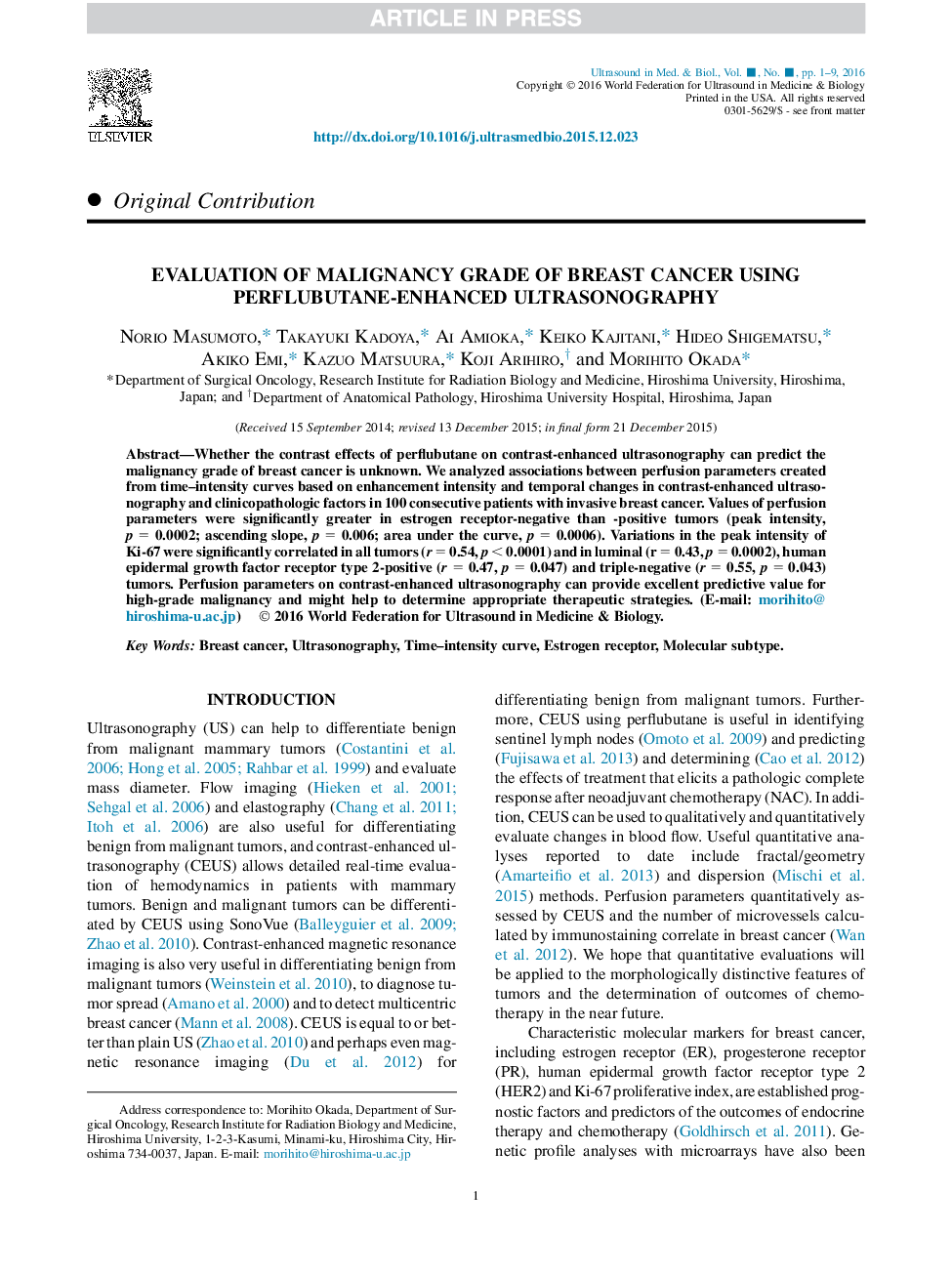| Article ID | Journal | Published Year | Pages | File Type |
|---|---|---|---|---|
| 1760203 | Ultrasound in Medicine & Biology | 2016 | 9 Pages |
Abstract
Whether the contrast effects of perflubutane on contrast-enhanced ultrasonography can predict the malignancy grade of breast cancer is unknown. We analyzed associations between perfusion parameters created from time-intensity curves based on enhancement intensity and temporal changes in contrast-enhanced ultrasonography and clinicopathologic factors in 100 consecutive patients with invasive breast cancer. Values of perfusion parameters were significantly greater in estrogen receptor-negative than -positive tumors (peak intensity, p = 0.0002; ascending slope, p = 0.006; area under the curve, p = 0.0006). Variations in the peak intensity of Ki-67 were significantly correlated in all tumors (r = 0.54, p < 0.0001) and in luminal (r = 0.43, p = 0.0002), human epidermal growth factor receptor type 2-positive (r = 0.47, p = 0.047) and triple-negative (r = 0.55, p = 0.043) tumors. Perfusion parameters on contrast-enhanced ultrasonography can provide excellent predictive value for high-grade malignancy and might help to determine appropriate therapeutic strategies.
Related Topics
Physical Sciences and Engineering
Physics and Astronomy
Acoustics and Ultrasonics
Authors
Norio Masumoto, Takayuki Kadoya, Ai Amioka, Keiko Kajitani, Hideo Shigematsu, Akiko Emi, Kazuo Matsuura, Koji Arihiro, Morihito Okada,
